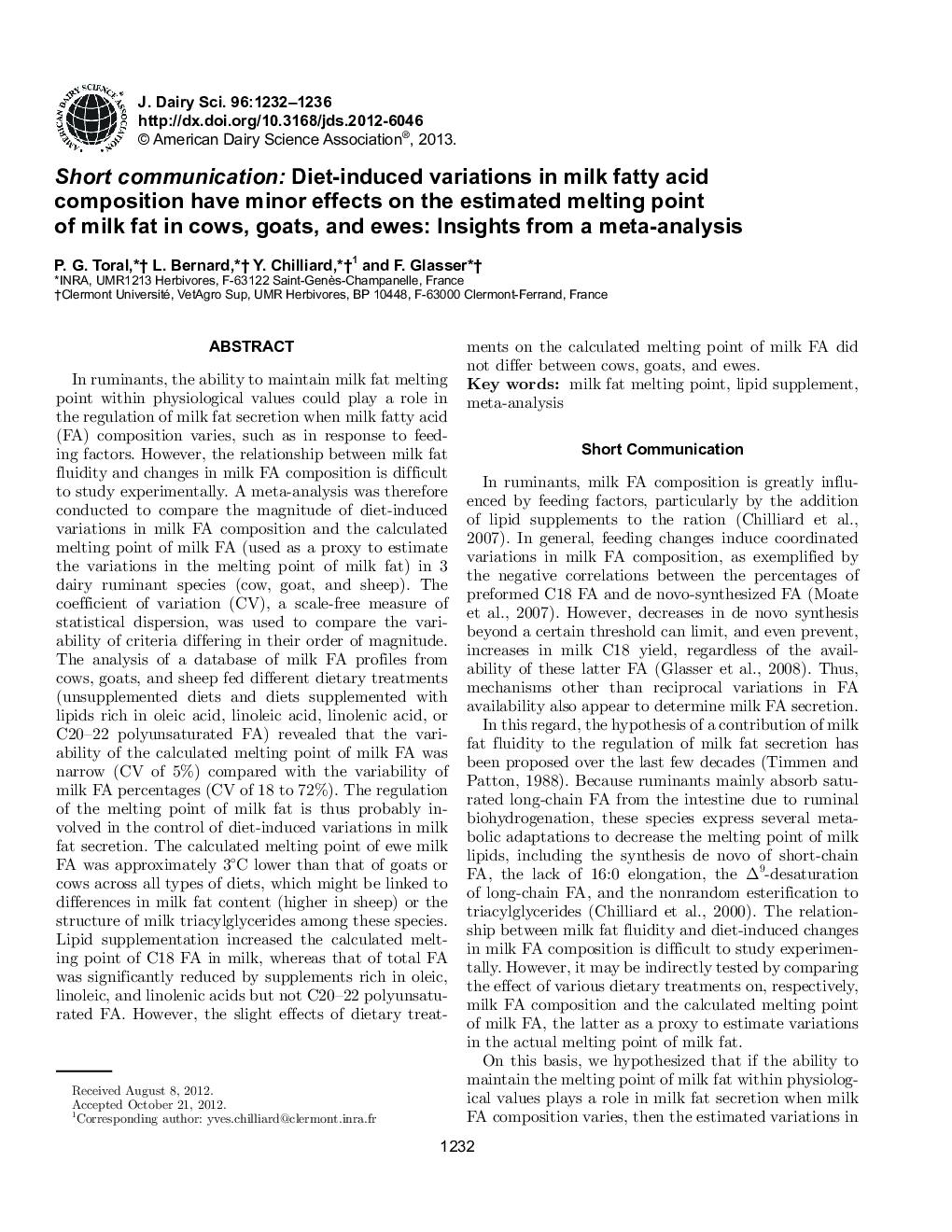| کد مقاله | کد نشریه | سال انتشار | مقاله انگلیسی | نسخه تمام متن |
|---|---|---|---|---|
| 10979991 | 1108067 | 2013 | 5 صفحه PDF | دانلود رایگان |
عنوان انگلیسی مقاله ISI
Short communication: Diet-induced variations in milk fatty acid composition have minor effects on the estimated melting point of milk fat in cows, goats, and ewes: Insights from a meta-analysis
ترجمه فارسی عنوان
ارتباطات کوتاه: تغییرات ناشی از رژیم غذایی در ترکیب اسید چرب شیر باعث کاهش معنی داری ذوب چربی شیر در گاو، بز و جوجه می شود: بینش از یک متاآنالیز
دانلود مقاله + سفارش ترجمه
دانلود مقاله ISI انگلیسی
رایگان برای ایرانیان
کلمات کلیدی
نقطه ذوب چربی شیر، مکمل چربی متاآنالیز،
موضوعات مرتبط
علوم زیستی و بیوفناوری
علوم کشاورزی و بیولوژیک
علوم دامی و جانورشناسی
چکیده انگلیسی
In ruminants, the ability to maintain milk fat melting point within physiological values could play a role in the regulation of milk fat secretion when milk fatty acid (FA) composition varies, such as in response to feeding factors. However, the relationship between milk fat fluidity and changes in milk FA composition is difficult to study experimentally. A meta-analysis was therefore conducted to compare the magnitude of diet-induced variations in milk FA composition and the calculated melting point of milk FA (used as a proxy to estimate the variations in the melting point of milk fat) in 3 dairy ruminant species (cow, goat, and sheep). The coefficient of variation (CV), a scale-free measure of statistical dispersion, was used to compare the variability of criteria differing in their order of magnitude. The analysis of a database of milk FA profiles from cows, goats, and sheep fed different dietary treatments (unsupplemented diets and diets supplemented with lipids rich in oleic acid, linoleic acid, linolenic acid, or C20-22 polyunsaturated FA) revealed that the variability of the calculated melting point of milk FA was narrow (CV of 5%) compared with the variability of milk FA percentages (CV of 18 to 72%). The regulation of the melting point of milk fat is thus probably involved in the control of diet-induced variations in milk fat secretion. The calculated melting point of ewe milk FA was approximately 3°C lower than that of goats or cows across all types of diets, which might be linked to differences in milk fat content (higher in sheep) or the structure of milk triacylglycerides among these species. Lipid supplementation increased the calculated melting point of C18 FA in milk, whereas that of total FA was significantly reduced by supplements rich in oleic, linoleic, and linolenic acids but not C20-22 polyunsaturated FA. However, the slight effects of dietary treatments on the calculated melting point of milk FA did not differ between cows, goats, and ewes.
ناشر
Database: Elsevier - ScienceDirect (ساینس دایرکت)
Journal: Journal of Dairy Science - Volume 96, Issue 2, February 2013, Pages 1232-1236
Journal: Journal of Dairy Science - Volume 96, Issue 2, February 2013, Pages 1232-1236
نویسندگان
P.G. Toral, L. Bernard, Y. Chilliard, F. Glasser,
